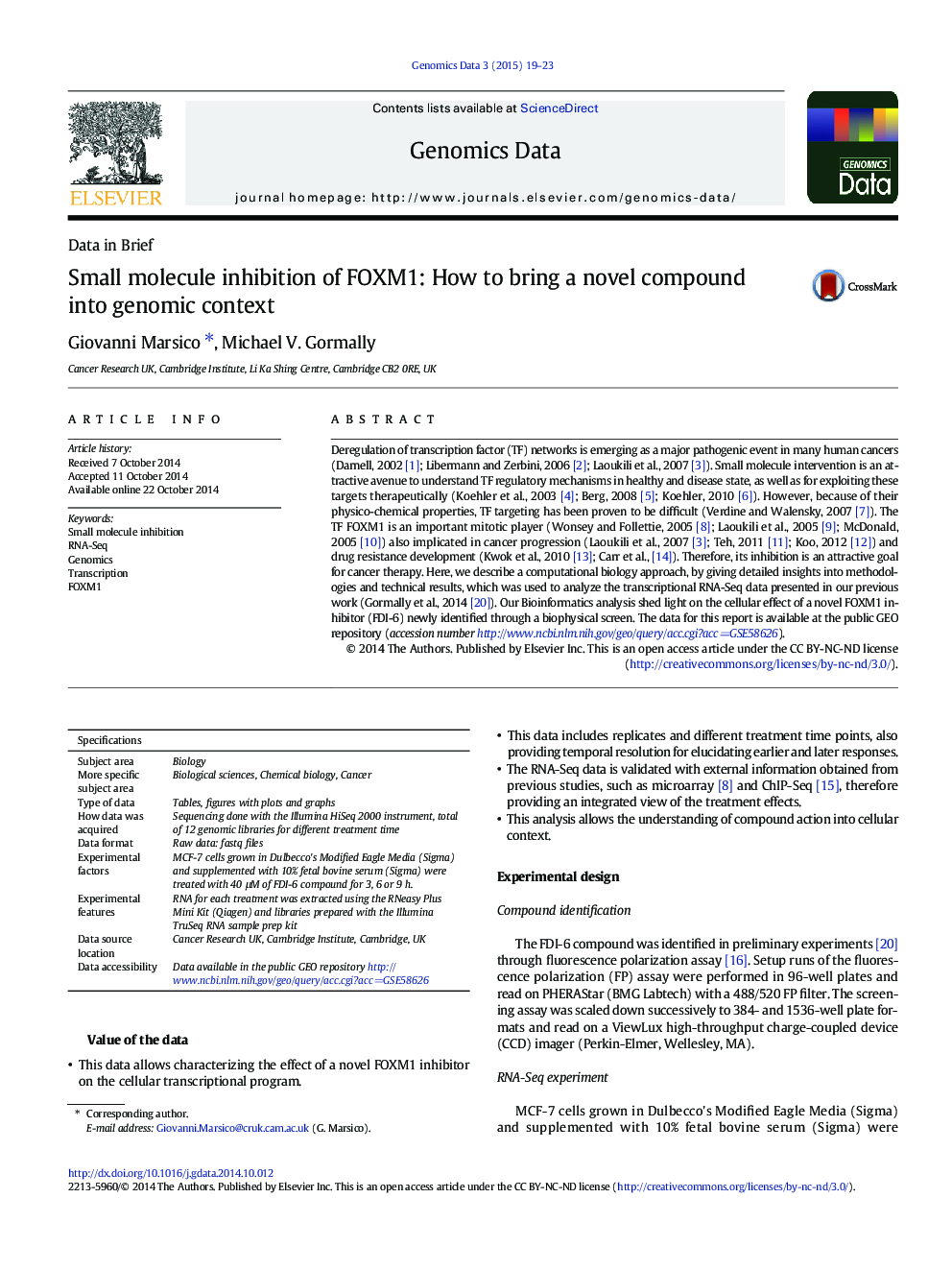| Article ID | Journal | Published Year | Pages | File Type |
|---|---|---|---|---|
| 2822081 | Genomics Data | 2015 | 5 Pages |
Deregulation of transcription factor (TF) networks is emerging as a major pathogenic event in many human cancers (Darnell, 2002 [1]; Libermann and Zerbini, 2006 [2]; Laoukili et al., 2007 [3]). Small molecule intervention is an attractive avenue to understand TF regulatory mechanisms in healthy and disease state, as well as for exploiting these targets therapeutically (Koehler et al., 2003 [4]; Berg, 2008 [5]; Koehler, 2010 [6]). However, because of their physico-chemical properties, TF targeting has been proven to be difficult (Verdine and Walensky, 2007 [7]). The TF FOXM1 is an important mitotic player (Wonsey and Follettie, 2005 [8]; Laoukili et al., 2005 [9]; McDonald, 2005 [10]) also implicated in cancer progression (Laoukili et al., 2007 [3]; Teh, 2011 [11]; Koo, 2012 [12]) and drug resistance development (Kwok et al., 2010 [13]; Carr et al., [14]). Therefore, its inhibition is an attractive goal for cancer therapy. Here, we describe a computational biology approach, by giving detailed insights into methodologies and technical results, which was used to analyze the transcriptional RNA-Seq data presented in our previous work (Gormally et al., 2014 [20]). Our Bioinformatics analysis shed light on the cellular effect of a novel FOXM1 inhibitor (FDI-6) newly identified through a biophysical screen. The data for this report is available at the public GEO repository (accession numberhttp://www.ncbi.nlm.nih.gov/geo/query/acc.cgi?acc=GSE58626).
